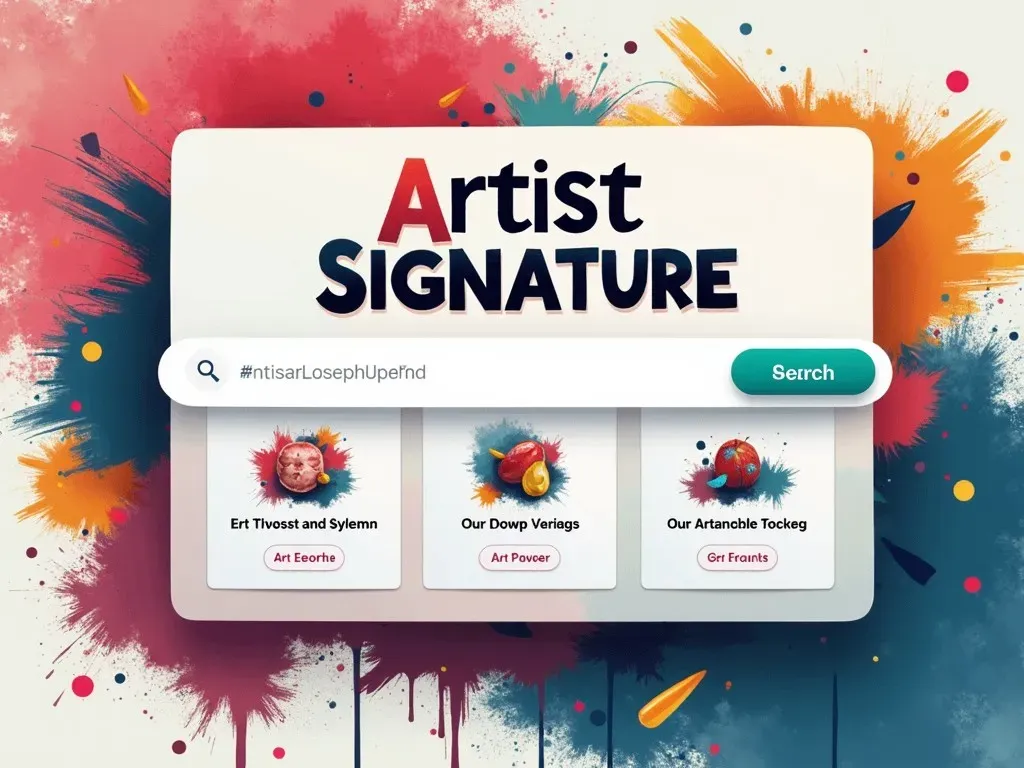Look up artist signature is a valuable tool for art enthusiasts, collectors, and historians who want to unravel the mysteries behind an artwork. Artist signatures are not just mere scribbles on the corners of paintings but are crucial identifiers that can offer insights into an artist’s identity, authenticity of the work, and even its historical significance.
When you come across a painting that intrigues you, one of the first steps in your research is to find artist by name through their unique signature. Every artist has a distinct way of signing their name, often unique to their personal style or period. While some signatures are easily recognizable, others can be quite challenging to decipher.
Why Artist Signatures Matter
Artist signatures serve many purposes throughout the art world, including:
- Authentication: Signatures can help verify whether a piece of art is genuinely from the claimed artist.
- Valuation: Knowing the artist behind a work can significantly affect its market value.
- Research: Signatures open pathways to delving deeper into art history, the biography of the artist, and their influences.
Types of Artist Signatures
There are several ways artists choose to sign their work, each presenting a different layer of meaning. Here are a few common types:
| Signature Type | Description |
|---|---|
| Full Name | The artist’s entire name for clarity. |
| Monograms | Combinations of letters representing the artist. |
| Initials Only | Often used when space is limited. |
| Unique Symbols | Personal symbols that may be less recognizable. |
How to Look Up Artist Signatures
- Identify Key Characteristics: Start by observing the signature—look for specific letters, symbols, or patterns.
- Use Online Resources: Websites such as Artists’ Signatures and ArtSig offer extensive databases for signature identification.
- Professional Consultation: When in doubt, consult professional appraisers or art historians specializing in signature verification.
The Search Process
Step 1: Visual Inspection
Take a clear, high-resolution photo of the signature. Make sure the lighting is sufficient to capture all details.
Step 2: Online Signature Databases
Utilize the signature search tools provided by platforms dedicated to art signature identification. Some notable references include:
- Signaturefinder: This database allows you to search through a variety of artist names and their respective signatures.
- Art Signature Dictionary: A comprehensive resource that showcases signatures and provides links to artists’ biographies.
Step 3: Cross-Reference Information
After finding a potential match, cross-reference it with the artwork’s details. Factors such as the painting’s medium (e.g., oil on canvas), historical period, and style can all influence your findings.
Reference Video
Common Artist Signature Challenges
Some signatures can be difficult to read due to various factors:
- Stylization: Many artists intentionally create elaborate or abstract signatures.
- Wear and Tear: Older artworks may have signatures that have faded over time, complicating identification.
- Similar Names: Variations in spelling or common names can lead to confusion during the search.
Table of Popular Artist Signatures
| Artist Name | Signature Style | Notable Works |
|---|---|---|
| Pablo Picasso | Full Name | Guernica, Les Demoiselles d’Avignon |
| Vincent Van Gogh | Initials (V.G.) | Starry Night, Sunflowers |
| Jackson Pollock | Abstract Marks | No. 5, 1948; Convergence |
| Georgia O’Keeffe | Full Name | Black Iris III, Red Hills |
FAQs
How can I authenticate an artist’s work through their signature?
Research the artist’s typical signatures using databases and comparing with the signature on your piece. Consulting an expert is advisable for valuable works.
Are there any free tools for artist signature identification?
Yes! Various online platforms, such as Artist Signatures and Art Signature Dictionary, offer free searches for artist identification.
What if the signature is illegible?
If the signature is unclear, try to find similar letter formations or use partial searches in databases. You can also seek help from art forums or communities.
Can all artist signatures be identified?
While many signatures are documentable, some may remain ambiguous due to the lack of available records or the obscurity of the artist.
Is there a legal significance to an artist’s signature?
Yes, artist signatures play an essential role in establishing ownership and authenticity, especially in disputes over art ownership.
Conclusion
By learning to look up artist signatures, you arm yourself with the knowledge to appreciate art on a deeper level and navigate the complexities of art history and collection. Utilizing online resources and understanding the types of signatures can significantly aid in your journey. Whether you’re an art aficionado or a casual observer, mastering signature identification adds tremendous value to your art experience—one signature at a time.
